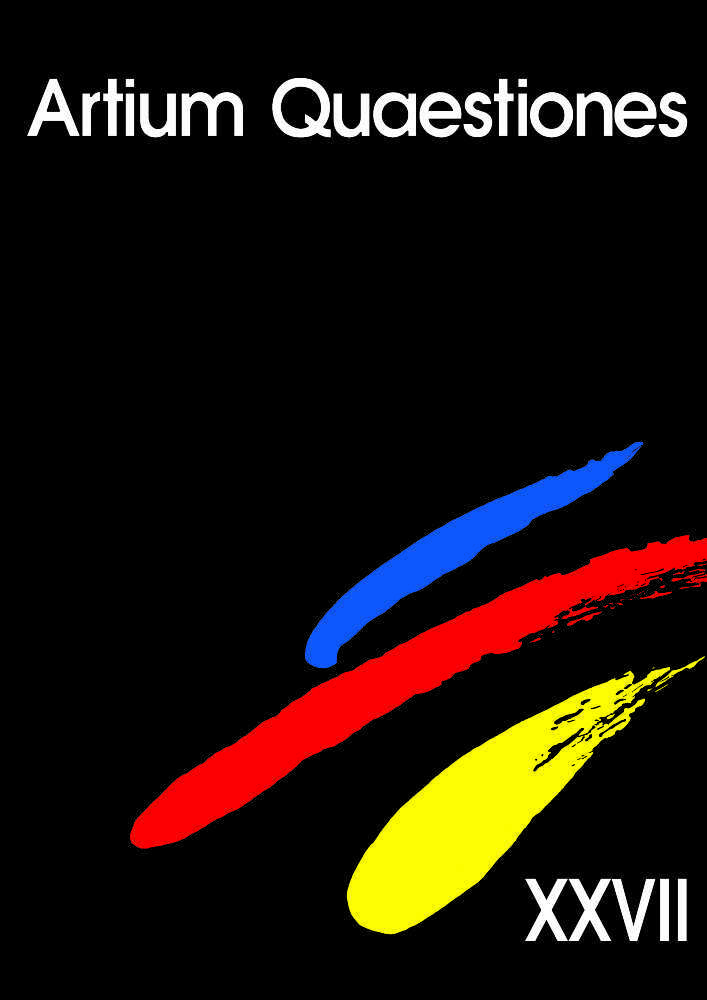Abstrakt
Since the 1990s, the motif of mimetically reproduced human skin, concentrating the recipient’s attention on the sense of touch and on the surface which separates theinside from the outside, seems to have been more and more popular. It has been quite ostentatiously exposed in the works of such well-known artists as Ron Mueck, Patricia Piccinini, Pipilotti Rist, John Isaacs, and Nicole Tran Ba Vang, becoming anemblem of the present. The paradox is, however – and this is one of the claims formulated in the present essay – that the motif’s most complex versions do not appear in photography, installations or the new media, but in easel painting which has been often dismissed as inadequate to new ideas. To provide evidence – the paintings of Magdalena Moskwa, Bartosz Kokosiński, Paweł Matyszewski, Grzegorz Sztwiertnia, Saskia de Kleijn, and Marina Schulze – the author has distinguished the so-called painterly dermatology. The present time, which offers no striking generational manifestoes or dominant artistic currents, has brought us a revealing metaphor coined by Yuri Lotman who compares the activity of artists to the dissociated energy of a minefield where we can here random explosions but it is impossible to predict if and where they will actually take place. Thus, it is the author’s contention that the painterly dermatology can be perceived as one of such explosions – they can be distinctly “heard” on the contemporary global art stage and included as a singular phenomenon in a broader tendency connected to the exploration of the body in the era of media convergence.
The selected artists, who have identified the motif of skin with the surface of a painting, have a initiated tension between the transformation of the body into the body of art, which is significantly close to the tradition of religious painting, and the transposition of the human skin into the skin of a painting, which stresses a metapainterly aspect and a dialog with the potential of the medium. The complexity of the painterly dermatology inaugurates a narrative which runs across not only of modernism and postmodernism, but also a centuries-old artistic tradition. Moreover, skin as a limit phenomenon is situated between the inside and the outside, putting this dualistic division into doubt. As a topic, it is both archaic and contemporary. Also, it should not be forgotten that the growing interest in the motif of skin is taking place in the context of changes of the hierarchy of the senses, downgrading sight in favor of touch and the tactile qualities of art which activate the sensomotoric and soma esthetic perception. After all, the sense of touch has always been located in the skin. Referring to Geoges Didi-Huberman, Hans Belting, and David Freedberg’s anthropology of painting as well as to Vilém Flusser’s extended philosophical dermatology, the author suggests that the easel painting provides the ground for the most complex artistic experiments in which the medium continues its self-critical work, being continuously reinvented, even though it does not remain as pure as Clement Greenberg wanted it to be. The question of the “painterly dermatology” corresponds to a claim of Rosalind Krauss that the “post-media era” does not dismiss the problem of the medium but readdresses it in a polemical context. The medium in the paintings of Moskwa, Matyszewski, Kokosiński, Sztwiertnia, de Kleijn, and Schulze, in which the picture of the skin is also the skin of the picture, has been defined in the essay as a network of conventions which determines a zone mediating between the material stratum of the painting and its aesthetic qualities, initiating critical and differentiating dialogs with the received tradition.
Licencja
Prawo autorskie regulowane jest oświadczeniem autora przygotowanym przez Wydawnictwo Naukowe UAM a od nr XXVIII także umową licencyjną na publikację online zawartą pomiędzy Autorem i Uniwersytetem im. Adama Mickiewicza. Autorzy ponoszą odpowiedzialność za oryginalność zamieszczanego materiału tekstowego oraz regulację praw autorskich dotyczących materiałów ilustracyjnych. W przypadku, gdy materiały pochodzą od redakcji – odpowiedzialność ponosi redakcja czasopisma.
Ten utwór dostepny jest na licencji Creative Commons Uznanie autorstwa - Użycie niekomercyjne - Bez utworów zależnych 4.0 Międzynarodowe.
